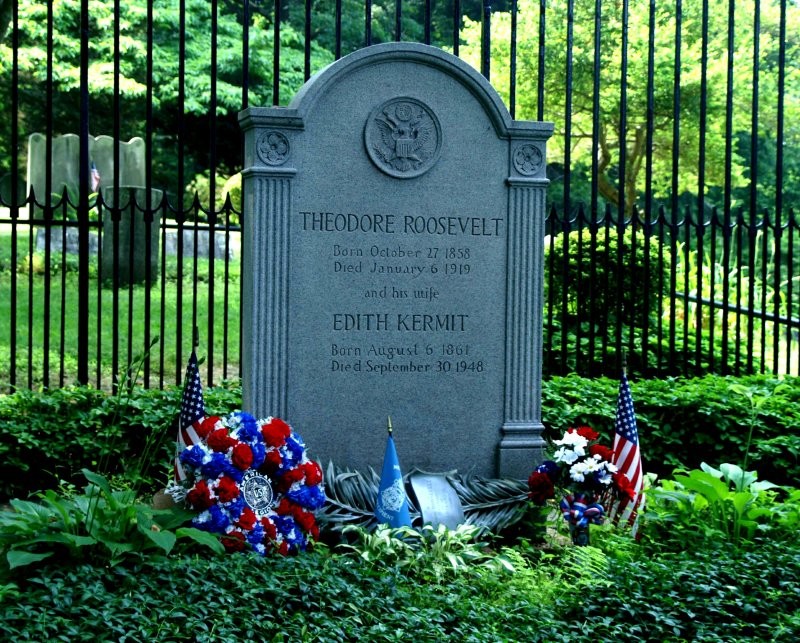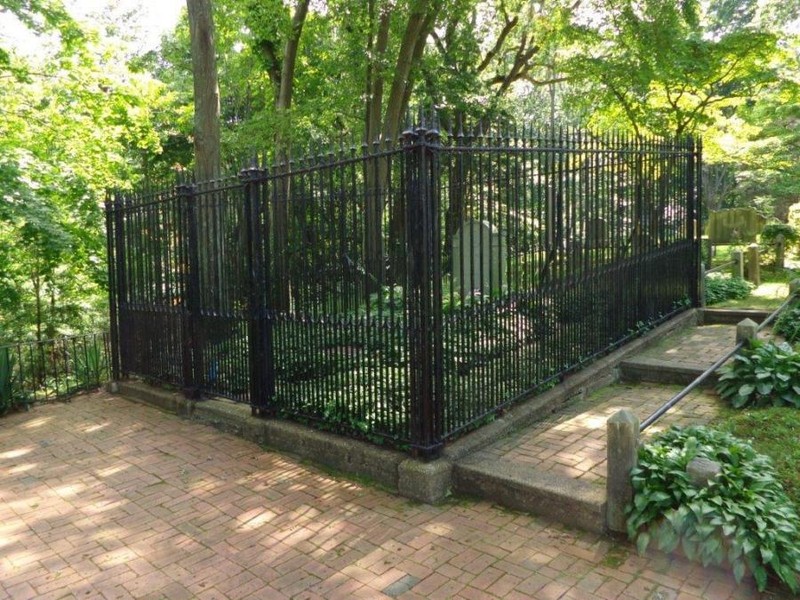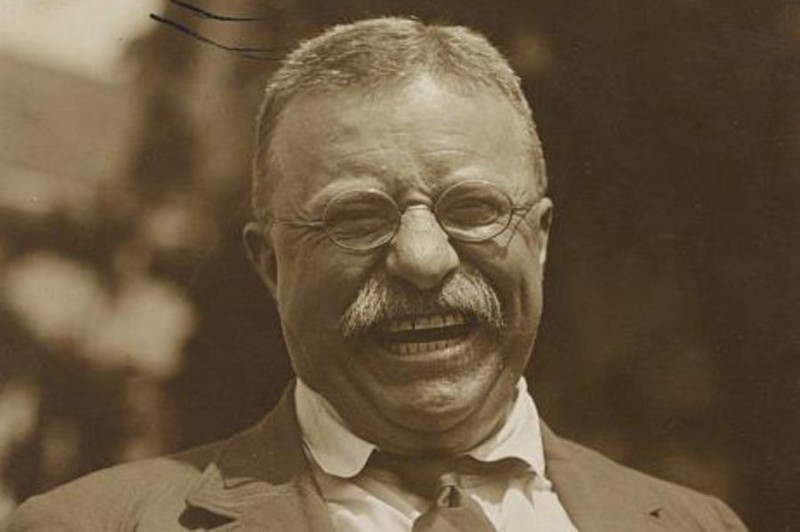Theodore Roosevelt's Final Resting Place (Youngs Memorial Cemetery)
Introduction
Text-to-speech Audio
Oyster Bay, New York, was one of the places dearest to Theodore Roosevelt's heart. He visited Oyster Bay first as a young man with his family, and returned many times, eventually building his own home there. When Roosevelt died in 1919, his family requested permission to bury him on land owned by the Youngs family, who had a small private burial ground there. The former president is buried at the top of a hill in Youngs Memorial Cemetery.
Images
Grave of Theodore Roosevelt

Grave of Theodore Roosevelt

Theodore Roosevelt

Backstory and Context
Text-to-speech Audio
Theodore Roosevelt first visited Oyster Bay as a teenager with his family in 1874. He was charmed by the natural beauty of the place, and would return to the area throughout his life. At 22, he purchased 155 acres in Oyster Bay to build his home, Sagamore Hill.
During Roosevelt's time in office, the home at Sagamore Hill functioned as the Summer White House, and the President simply relocated his White House staff to Oyster Bay. When he died in his sleep in 1919, his family, well aware of the President's deep love for the area, requested permission to bury him on a hill overlooking Oyster Bay. The land was the private burial ground of the Youngs family, the same family who sold Roosevelt the land on which Sagamore Hill was built. The president is buried at the top of a hill in the cemetery.
Roosevelt's funeral was simple, as is his gravesite. Twenty-six steps lead up the hill to the site, denoting Roosevelt's status as the twenty-sixth president.
Roosevelt once remarked to a cousin that the woods near the cemetery were home to the greatest variety of birds in Oyster Bay. As a young man, Roosevelt listened closely to the different bird calls in the area, learned to mimic them, and recorded them in his journals. Following the president's death, his cousin, Emlen Roosevelt, purchased the surrounding woods and established the Theodore Roosevelt Sanctuary. The cemetery and sanctuary are within walking distance of each other.
Youngs Memorial Cemetery is open to the public. It is roughly two miles from the Sagamore Hill National Historic Site.
During Roosevelt's time in office, the home at Sagamore Hill functioned as the Summer White House, and the President simply relocated his White House staff to Oyster Bay. When he died in his sleep in 1919, his family, well aware of the President's deep love for the area, requested permission to bury him on a hill overlooking Oyster Bay. The land was the private burial ground of the Youngs family, the same family who sold Roosevelt the land on which Sagamore Hill was built. The president is buried at the top of a hill in the cemetery.
Roosevelt's funeral was simple, as is his gravesite. Twenty-six steps lead up the hill to the site, denoting Roosevelt's status as the twenty-sixth president.
Roosevelt once remarked to a cousin that the woods near the cemetery were home to the greatest variety of birds in Oyster Bay. As a young man, Roosevelt listened closely to the different bird calls in the area, learned to mimic them, and recorded them in his journals. Following the president's death, his cousin, Emlen Roosevelt, purchased the surrounding woods and established the Theodore Roosevelt Sanctuary. The cemetery and sanctuary are within walking distance of each other.
Youngs Memorial Cemetery is open to the public. It is roughly two miles from the Sagamore Hill National Historic Site.
Sources
History. trgravesite.org. Accessed January 14, 2018. http://www.trgravesite.org/gravesite.html.
